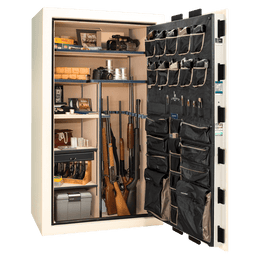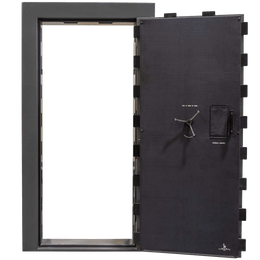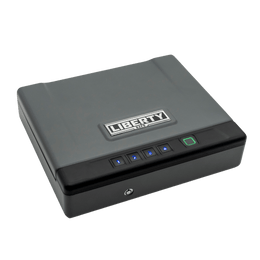For many newcomers, big game hunting can seem intimidating—a tradition passed down through generations, steeped in know-how and lore. But rest assured: anyone can enter the world of hunting. This guide offers a foundational overview meant to spark curiosity and serve as a stepping stone for deeper exploration. The United States provides unmatched access to public hunting lands and well-managed wildlife populations, making it one of the best places in the world to take up the sport.
Before diving into the how-to of hunting, it's important to recognize that your geographic location heavily influences how you get started. While there are general principles that apply across the country, understanding regional differences is key to a smooth entry into the sport.

Hunting Across the Country: East vs. West
The most significant factor that affects hunting style and strategy is geography. In the most broad sense, the U.S. can be divided into Eastern and Western hunting regions:
-
Western U.S.: Known for its abundance of public land, mountainous terrain, and open landscapes, the West favors a "spot and stalk" style of hunting. Game populations are spread out, species variety is higher, and access often involves rugged travel.
-
Eastern U.S.: More densely populated with fewer public land options, the East is dominated by thick vegetation and flatter terrain. Hunters often rely on "ambush" tactics such as tree stands and ground blinds. Bag limits are typically higher, but the number of huntable species is more limited.
Hunting laws also vary significantly by state and region:
-
In the West, hunters often participate in a lottery-based tag system, applying for specific species, locations (called "units"), and seasons. High-demand tags can be difficult to draw and often require multiple years of application.
-
In the East, hunters more frequently have “over-the-counter” access to licenses that allow them to buy permits every year. However, the challenge often lies in securing access to land, whether public or private.
Focus on Deer: The Entry-Level Big Game
This guide centers primarily on deer hunting, the most accessible and common big game species in North America. Deer provide an ideal entry point into the sport, offering the best balance of availability, challenge, and reward. While other big game like elk, moose, or bighorn sheep exist, they often require years of preparation and a more advanced skill set, and the lessons learned by focusing on deer during those years of preparation will oftentimes better prepare you for these hunts than any introductory hunting guide could.
Where to Hunt
Having discussed the differences in hunting approaches by region, we can break down how this look for actually finding a hunting spot.
The West:
In western states like Colorado, Montana, and Idaho, vast tracts of public land such as Bureau of Land Management (BLM) areas and National Forests are open to hunters. However, the key challenge is finding where the animals are. Game tends to congregate in remote, difficult-to-access areas, making hunting here physically demanding. When you hunt the West, you'll be assigned a specific "unit," often the size of a county, where you're allowed to hunt. As can be assumed, units with larger populations and better odds of success take longer to successfully obtain a permit in (known as “drawing a tag”). Choosing the right unit involves balancing your chances of drawing a tag with the probability of encountering game. Most states provide easily accessible, detailed historical statistics on each unit through their wildlife agencies to help guide your decision.
The East:
Eastern hunters often face a different challenge: access. While states like Pennsylvania and Georgia offer thousands of acres of public hunting land, pressure from other hunters can make these areas inconsistent.
Private land access thus becomes an ideal avenue for hunting. Most often, this means knocking on doors, calling landowners, or joining a hunting lease or club. Once access is secured, the opportunities for consistent success improve dramatically. Regardless of location, always obtain explicit permission and follow local laws to maintain good relationships with landowners and the public. Just the same as for the Western hunter, analyzing local harvest statistics can help you identify promising counties or management areas. However, proximity to your home is equally important, as it allows for more scouting and familiarity with the area.
Regardless of whether you find yourself in the East or the West, of the most underutilized resources for new hunters is the local hunting community. Making connections with experienced hunters can provide invaluable guidance, from gear recommendations to local animal behavior. While they may not reveal their favorite hunting spots, many will gladly help you get started. As a newcomer, consider starting things nice and easy and hunting antlerless animals for the freezer instead of for the camera. This will make it more likely to get help, lead to higher likelihoods of harvesting an animal, and more time out in the field with the abundance of antlerless hunting opportunities. This will all contribute to greater opportunities to grow your expertise and more satisfaction with your hunting experiences.

Scouting: The Key to Success
Once you have access to land, the real work begins: scouting. Understanding animal behavior is essential, and it boils down to three elements: food, water, and cover. Use tools like Google Earth to identify potential feeding areas, water sources, and bedding grounds. Visit these areas to look for signs such as tracks, droppings, and trails. The best times to scout are at dawn and dusk when animals are most active and likely to be observed. In the West, take advantage of high vantage points to look over large areas with binoculars or spotting scopes (known as “glassing”). Observing animals from afar allows you to track patterns without disturbing the area. If you see significant activity and are comfortable with the expense, you could even consider installing trail cameras to get photographic references of animal movement.
Hunting Tactics: Ambush vs. Spot and Stalk
Once you've learned where the animals travel, it's time to plan your hunt. Really, this comes down to the daily application of the basic techniques of:
-
Ambush Hunting: Common in the East, this involves setting up in the high-traffic areas (funnels, trails, feeding sites) you have identified in your scouting and waiting for the animal to come to you. Tree stands and ground blinds are useful here.
-
Spot and Stalk: Practiced most often in the West, this technique requires spotting animals from a distance and carefully approaching within shooting range. In the end, it is ultimately still ambush, where you are predicting the movements of your quarry and attempting to get into position beforehand. It demands more physical effort and fieldcraft but can be incredibly rewarding.
This is the essence of hunting: predicting where the animals will be and remaining completely undetected. At its core, a hunter’s skill is defined by the ability to read the land, understand animal behavior, and position oneself accordingly—often long before the game ever appears. Beyond that, success largely depends on timing, chance, and forces beyond your control.
Even the most experienced hunters have been outsmarted more times than they can count—"busted" by game that caught their scent, spotted a subtle movement, or reacted to some instinctive sixth sense that wild animals seem to possess. It's a humbling reminder that in the natural world, nothing is guaranteed, and part of the hunt is learning from these quiet defeats.
Weapon Choices and Hunting Seasons
With all this talk of “getting into range” of your quarry, it is important to understand the tools of the trade. Hunting seasons are typically divided by weapon type, with each having its own drawbacks and benefits:
-
Archery: Longest season and highest tag draw rates and lowest pressure. Requires the most skill and proximity to the animal (~60 yards), but lots of opportunity due to low pressure.
-
Muzzleloader: A step up in range (~200 yards) and simplicity from archery, but still requires some specialized skills.
-
Rifle: Shortest season and sees highest density of hunters, but offers the longest range (~400 yards) and easiest learning curve.
With these pros and cons outlines above, choose based on your experience level, available time, and interests, but don’t be discouraged just because archery sounds most difficult or that rifle is going to see you bumping into more hunters. Each possesses plenty of satisfaction and reward, with many hunters participate in multiple seasons to maximize their opportunities.

Essential Gear and Tools
Outside of your weapon, there are a number of other pieces of equipment you need out in the field. You don’t need top-of-the-line gear to be successful, but there are a few essentials:
-
Quality Knife and Bone Saw: For field dressing and processing meat. Basic gerber foldables and outdoor edge replaceable bladed knives are some great, low-cost options.
-
Game Bags: To keep meat clean during transport.
-
Backpack: For hauling gear and (hopefully) meat.
-
Binoculars and Rangefinder: Critical for scouting and judging distances.
-
First Aid Kit: You’re out in the woods dealing with weapons, be prepared for the worst case scenario.
Invest wisely. Start with affordable gear and upgrade as you gain experience and see what you really need to invest money into for your particular situation. Knowledge and skill often matter more than gear quality.
Clothing and Layering
Hunting often involves dramatic shifts in temperature and activity level. The key to staying out longer in the elements is to master the basics of layering:
-
Base Layer: Moisture-wicking to keep sweat off your skin.
-
Insulating Layer: Retains body heat.
-
Outer Layer: Windproof and waterproof shell to protect against the elements.
That’s all there is to it. Some additional tips include using quiet fabrics and scent-reducing materials, to give you the added edge that can make all the difference in the field. Don’t be fooled either, Outdoor stores like REI are just as helpful as hunting-specific retailers when it comes to choosing functional outdoor clothing.

After the Harvest: Processing and Respect
Many new hunters overlook what happens after the shot. Field dressing, transporting, and preserving meat are critical steps that deserve preparation.
-
Prepare for Field Dressing Game: Watch videos and read guides well before your hunt. Review them often and consider downloading any materials to your phone for consultation in the field when things get messy.
-
Plan Your Exit Strategy: Will you drag the animal, quarter it, or haul it out whole?
-
Keep Meat Cool: High temperatures can ruin meat quickly. Bring coolers and plan for immediate transport.
-
Know Your Local Processors: Call ahead to confirm hours and ensure you have coordinated drop-off requirements. If you're processing meat yourself, ensure you have the space and tools ready.
Treating the animal with respect means making full use of your harvest. This includes preparing meat for your family or donating it through game-sharing programs like “Hunters Helping the Hungry”.
Final Thoughts
Hunting is more than the pursuit of game. It’s about immersing yourself in nature, building skills, and forming lasting memories. You will make mistakes—every hunter does. But each outing is an opportunity to learn, grow, and reconnect with the wild. Success isn’t measured by antler size or social media posts. It’s found in the stillness of the pre-dawn, the excitement of a close encounter, and the satisfaction of providing for yourself and your family. Whether you harvest a mature buck or a humble doe, the value lies in the experience. Welcome to the journey. Be safe, be respectful, and enjoy your time in the field.







